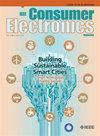CMRM:多目标交通信号控制的协同多智能体强化学习
IF 10.9
2区 计算机科学
Q1 ENGINEERING, ELECTRICAL & ELECTRONIC
引用次数: 0
摘要
有效的交通信号控制是缓解城市交通拥堵的一种经济有效的方法。多智能体强化学习(MARL)已成为一种被广泛采用的优化交通信号控制(TSC)方法。然而,现有的基于marl的方法往往侧重于单一的优化目标,缺乏对交通效率、环境污染和交通安全的综合考虑。同时,这些方法往往不能有效地捕捉多交叉口场景中智能体之间动态复杂的交互,影响交通效率。在本文中,我们提出了一种基于marl的多目标TSC协作方法,称为CMRM。首先,我们引入了一个综合交通效率、环境影响和安全的多目标奖励机制,引导agent进行更全面的优化。其次,设计了基于图关注机制的协作增强模块(CEM),动态捕获相邻agent的状态信息;这减轻了独立近端策略优化(IPPO)中的部分可观察性问题,增强了模型捕捉智能体之间动态和复杂交互的能力。最后,我们在两个真实的交通网络上使用SUMO来评估所提出的CMRM方法的性能。实验结果表明,该方法在降低环境污染和提高交通安全性的同时,显著提高了交通效率,在两种不同交通网络下,与最佳基线相比,CO2排放量分别减少了约17.53%和9.57%,车辆碰撞风险分别降低了44.39%和42.85%。本文章由计算机程序翻译,如有差异,请以英文原文为准。
CMRM: Collaborative Multi-Agent Reinforcement Learning for Multi-Objective Traffic Signal Control
Efficient traffic signal control is a cost-effective way to ease urban traffic congestion. Multi-agent reinforcement learning (MARL) has become a widely adopted method for optimizing traffic signal control (TSC). However, existing MARL-based methods often focus on a single optimization objective, lacking a comprehensive consideration of traffic efficiency, environmental pollution, and traffic safety. Simultaneously, these methods often fail to effectively capture the dynamic and complex interactions among agents in multi-intersection scenarios, which negatively impacts traffic efficiency. In this article, we propose a collaborative MARL-based method for multi-objective TSC, called CMRM. First, we introduce a multi-objective reward mechanism that integrates traffic efficiency, environmental impact, and safety to guide agents toward more comprehensive optimization. Second, we design a cooperation enhancement module (CEM) based on the graph attention mechanism to dynamically capture neighboring agents’ state information. This mitigates the partial observability problem in independent proximal policy optimization (IPPO) and enhances the model’s ability to capture dynamic and complex interactions among agents. Finally, we assess the performance of the proposed CMRM method using SUMO on two real traffic networks. Experimental results demonstrate that our method significantly improves traffic efficiency while reducing environmental pollution and enhancing traffic safety, compared to the best performing baseline, our method reduces CO2 emission by approximately 17.53% and 9.57%, and lowers vehicle collision risks by 44.39% and 42.85% in two different traffic networks.
求助全文
通过发布文献求助,成功后即可免费获取论文全文。
去求助
来源期刊
CiteScore
7.70
自引率
9.30%
发文量
59
审稿时长
3.3 months
期刊介绍:
The main focus for the IEEE Transactions on Consumer Electronics is the engineering and research aspects of the theory, design, construction, manufacture or end use of mass market electronics, systems, software and services for consumers.

 求助内容:
求助内容: 应助结果提醒方式:
应助结果提醒方式:


